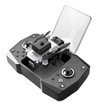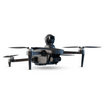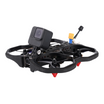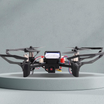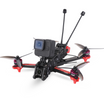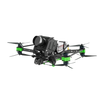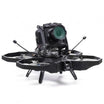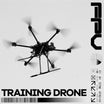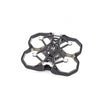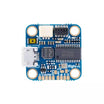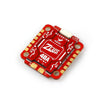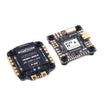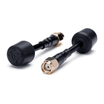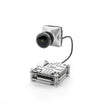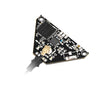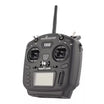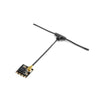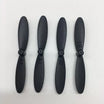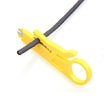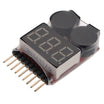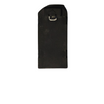Ever wondered how a drone in flight actually works? The flight dynamics of a quadcopter drone (one with four propellers) are controlled by a fairly simple set of laws that can provide them with incredible maneuverability and dexterity with just two control sticks. The key to understanding drone flight is to understand a very fundamental rule of physics: Newton’s Third Law of Motion – ‘Every action has an equal and opposite reaction.’
Take off and Hovering
For a drone to take off, it requires lift, which is provided to it by spinning the propellers. The blades of the propellers are curved, which causes air to move faster below the blade than above it, causing a higher pressure to form below the blade than above it, pushing the drone upward. This is known as the Airfoil Principle. During take off, the propeller speed is increased until lift force overcomes gravitational pull caused by the weight of the drone. The drone rises until required to do so. When the drone needs to hover at a particular altitude, the propeller speed is proportionately reduced such that the lift force provided by the propellers is balanced out by gravity. The ability of the drone to fly is therefore intricately associated with its weight, and lighter drones can become airborne easier and consume less fuel, as they can achieve the same altitude with a lower propeller speed.
Interestingly, for a drone to remain hovering in a stationary position, the propellers along the two different diagonals rotate in different directions. This is because if they all spun in the same direction, a reaction torque would be created that causes the drone to rotate in the opposite direction.
The Three Motions
There are three ways to rotate the drone: pitch, yaw and roll. Pitch is the forward rotation, the up and down movement of the nose of the drone. Yaw is the right to left rotation and roll is the turning of the drone about its nose-tail axis.
Yaw is controlled using a mechanism that we have just touched up on. The drone rotates in the opposite direction to the net rotational direction of its propellers. Thus, by decreasing the speed of the clockwise-rotating propellers, the whole drone rotates clockwise (opposite to the faster counter-clockwise propellers). The yaw of the drone has its own control stick.
Pitch is even easier to control. By decreasing the speed of the propellers in the front or the back of the drone, it can be made to pitch forward (nose down) or backward (nose up), by reducing the lift on that particular half of the drone.
Roll is similar, with a lower propeller speed on one side causing the drone to tilt towards that side. Pitch and Roll are typically adjusted with the same stick, as they are fundamentally similar in their control.
Movement
So how does the drone move? The physics of it is much simpler than meets the eye. The propellers of the drone push it upward, perpendicular to the blades. Thus, if the drone has any pitch or roll, the lift provided by the propellers is not straight upwards, but a combination of part upward and part in the direction at which the drone is angled. Pitching the nose down will cause the lift to be directed in two components: upward to keep the drone flying, and forward. Pitching the nose up will push the drone backward. Rolling to the right and left make the bird move right and left respectively. A combination of the two, i.e., a forward pitch and a roll to the right, as an example, will put the drone on a curved path in the forward and rightward direction.
In summary, the movement of quadcopter drones is controlled by adjusting the speeds of the four propellers relative to one another, the pair of diagonals controlling yaw, the pair of front and back propellers controlling the pitch and the propeller pair on the sides controlling roll. The pitch also provides forward and backward movement and the roll helps turn the drone, while overall propeller speed controls altitude.
For more such informative content visit : https://insidefpv.com/blogs/
Follow us on Linkedin for latest updates : https://in.linkedin.com/company/inside-fpv

